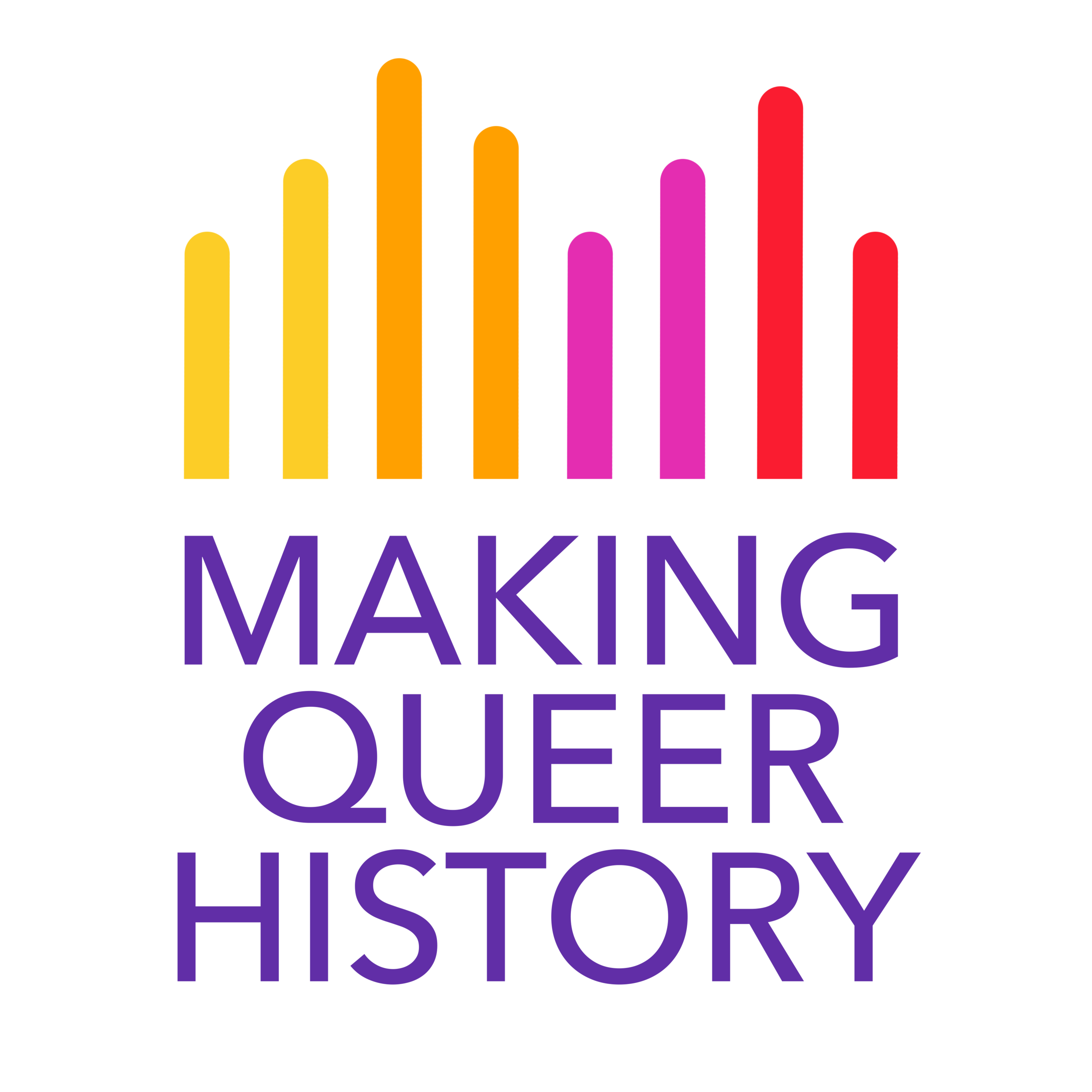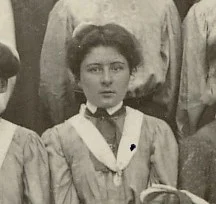If you have loved a brave story
Tell it but rarely:
And, with due faith in its glory
Render it barely.
Then must the listener, hearing
Your tale of wonder,
Let his own hoping and fearing
Tear him asunder
— Lesbia Harford
In the course of this project, we’ve looked at dozens of stories, dozens of lives. The most exciting and difficult part is often picking through all of the stories to find the truth. So often our stories are rewritten when we are no longer around the tell them. In uncovering our history, we must find the truth of the lives lived and not the truth we want.
Born in 1891 in New South Wales, Australia, Lesbia Harford was raised by her single mother after her father left to find work and never returned. She was considered a quiet and solitary child; though some speculated that she perhaps didn’t care for company, it is more likely due to her poor health. Later in her life, she wrote that growing up without a father actually gave her a sense of independence, and seeing her mother struggle to raise four children opened her eyes to the classism and sexism around her.
For since no male
Has ruled me or has fed,
I think my own thoughts
In my woman's head
Though she received a law degree from Melbourne University, one of the first women to do so, she instead went to work in a women’s clothing factory. During her time in university, she had become increasingly interested in radical politics. In particular, she was heavily involved in women’s liberation as it related to workers’ rights and society. Despite her chronic illness, she spoke fondly of her time at the factory working with her fellow women. The more she fell in love with her work and, more importantly, the women she worked with, the more strongly she advocated for their rights. She began by petitioning the Clothing Workers Union for female representatives and equal pay, and for a time she even sat as the Vice President. She had this to say about her fellow workers and the upper-class women they produced for.
All day long
We sew fine muslin up for you to wear,
Muslin that women wove for you elsewhere,
A million strong.
Just like flames,
Insatiable, you eat up all our hours,
And sun and loves and talk and flowers,
Suburban dames.
In the same vein, she was a steady advocate for free love; what we would call polyamory today. She strongly connected women’s liberation with workers’ rights and women’s rights to open relationships. About this time, she developed a relationship with a woman named Katie Lush, a philosophy tutor at Melbourne University. Through her many other loves and loses, Katie continued to be a part of Lesbia’s life.
As World War One broke out, Lesbia was thrust into anti-war and anti-conscription politics. With her work in the clothing factory and her radical politics, her involvement with the Industrial Workers of the World was to be expected. She campaigned with people like writer Guido Baracchi, a member of the Australian Communist Party with whom she began a relationship with at University. Theirs was another relationship that would last until Lesbia’s final days. Though some claim that Lesbia only became involved in radical politics because of her involvement with Guido, he himself has stated that it was Lesbia who pushed him further into communism and workers’ liberation. Inspired by Lesbia, he tried his hand at factory work. He lasted a week.
While she was able to keep her job at the factory most of the time, a chronic heart condition did make this a struggle. The more involved she became in campaigning and protesting, the more she put her health at risk. At one point, she was hospitalized and broke out with the help of a nurse. When the IWW was banned during WWI for anti-war propaganda, many worried that she wouldn’t survive a prison sentence if it came to that. Lesbia, however, continued her work, sewing and writing and campaigning. If anything, her health made her more thoughtful and determined. Not in spite of it, but because of it.
Through her work with the IWW, she also met Pat Harford, an artist renowned for his impact on Australian Modernism. Pat was a drafted soldier and returned with a chronic injury and PTSD. Their health, their radical beliefs, and their art brought Lesbia and Pat together. Though after her death Guido and Lesbia’s brother Esmond insisted that theirs was a short and failed marriage, Pat and Lesbia lived happily together for many years writing poetry together and campaigning with the IWW. It was only after Pat’s own health became too overwhelming that the two separated.
After their separation, Lesbia moved home to her mother’s boarding house. Though never stopped writing, she seemed to sense that she was nearing her end. She spoke of God and what would come after, and she seemed sad only for work she would never see the end of. She passed in July of 1927 with Katie Lush watching over her.
I was sad
Having signed up in a rebel band,
Having signed up to rid the land
Of a plague it had.
For I knew
That I would suffer, I would be lost,
Be bitter and foolish and tempest tost
And a failure too.
I was sad;
Though far in the future our light would shine
For the present darkness was ours, was mine,
I couldn't be glad.
There are many struggles in telling the stories of our history, the keenest being the fear of rewriting the story. Lesbia Harford’s is a story that could have easily been directed by the things in her life she had no control over, and after her death, the world tried to do just that.
Lesbia is a woman with many loves, and that cannot be taken from her, but beyond that, she was a woman. She was not a martyr or something untouchable; she was a person who fought for revolution, who wrote of her experiences, who loved so many people and still maintained her sense of self. Sorting through the facts of a whole life lived, no matter how long or eventful, will always be a struggle, but it is one worth going through. Most of the time, it is not the most exciting or even well-known story that is the truth; the truth is that we live our lives for ourselves, and that is enough to inspire many. Those stories, our stories, are worth telling.
[Disclaimer: some of the sources may contain triggering material]
“Lesbia Harford.” Australian Poetry Library. The University of Sydney. www.poetrylibrary.edu.au/poets/harford-lesbia
Harford, Lesbia. The Poems of Lesbia Harford. Melbourne University Press. 1941.
Lamb, Lesley. “Harford, Lesbia Venner.” Australian Dictionary of Biography. Australian National University. 1983. adb.anu.edu.au/biography/harford-lesbia-venner-6562
“Revolutionary Lives: Lesbia Harford.” Red Flag. https://redflag.org.au/article/revolutionary-lives-lesbia-harford
“Lesbia Harford.” Podcast. Queer As Fact. 15 Dec. 2017. http://queerasfact.podbean.com/e/lesbia-harford/


